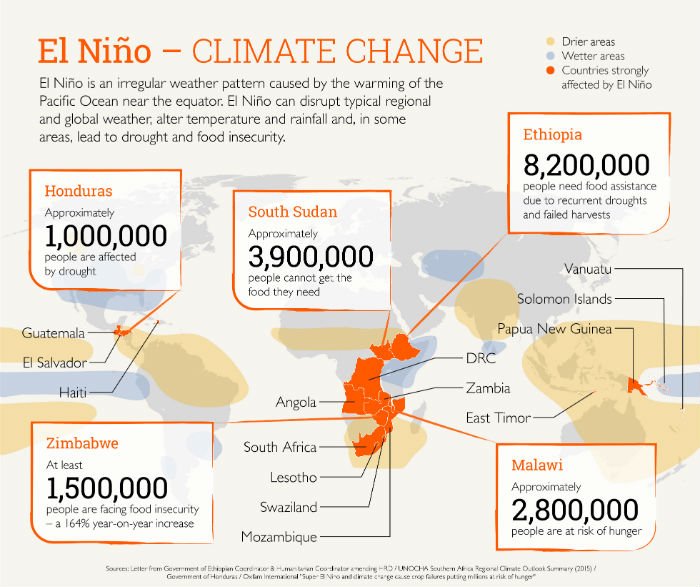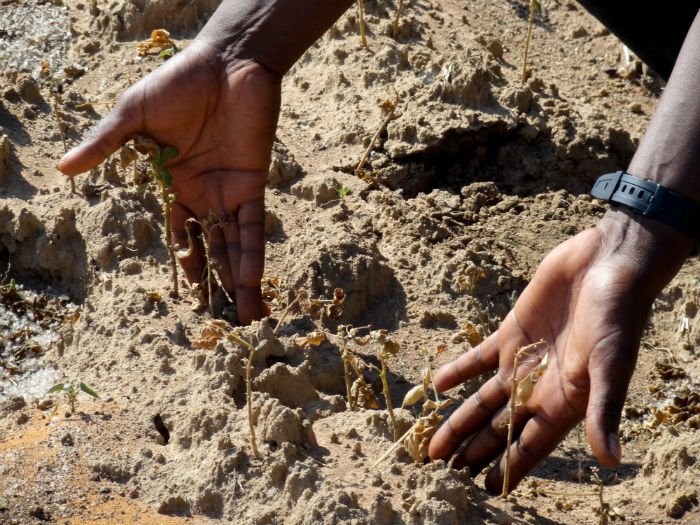By this point – whether coupled with the word “rain” or “drought” - you’ve probably heard of El Niño. It is essentially big shifts in weather patterns across the world due to the extensive warming of the central and eastern tropical Pacific.
In the Horn of Africa, El Niño creates the extremes of both extensive drying and flash flooding, depending on the time of year and region.
That means drought, ruined crops, and dying livestock. And each of those means hunger.
That hunger is most keenly felt for those who are already vulnerable. According to the UN, over 19.2 million people in the Horn of Africa are at risk of extreme hunger and malnutrition as a result of rising temperatures.
“This El Niño is putting the most vulnerable –and that includes many millions of children –at great risk,” said Richard Rumsey, World Vision’s Resilience and Livelihoods director. “Over the next few months we are going to see many countries impacted by an El Niño weather event that could be as bad as any we have seen, and could be being worsened by climate change.”

Five years ago, governments saw the disaster coming but failed to take early action to abet the food crisis unfolding in Africa. 258,000 lives were lost which might otherwise have been saved. But this widely acknowledged failure of the international humanitarian system doesn’t have to repeat itself.
“If we act now with funding and intelligent programming, and support government efforts to aid their citizens, we can actually save lives, prevent children wasting and build communities that are more resistant to these events,” said Rumsey.
In the face of El Niño and other crises, leaders at the national, regional and international leaders have a responsibility to address the underlying causes of food insecurity and guarantee that the most vulnerable children and communities get ahead through an immediate, effective, global response to prevent loss of life and livelihoods. Next year, the UN hosts the World Humanitarian Summit, bringing together governments and aid experts to thrash out solutions. And during the Climate Summit in Paris, global leaders had another opportunity to address one of the most important underlying causes of climate-related disasters such as droughts and floods.

Now is the time to keep our promise to the world’s most vulnerable.
This article was written by Callie Radke of World Vision.